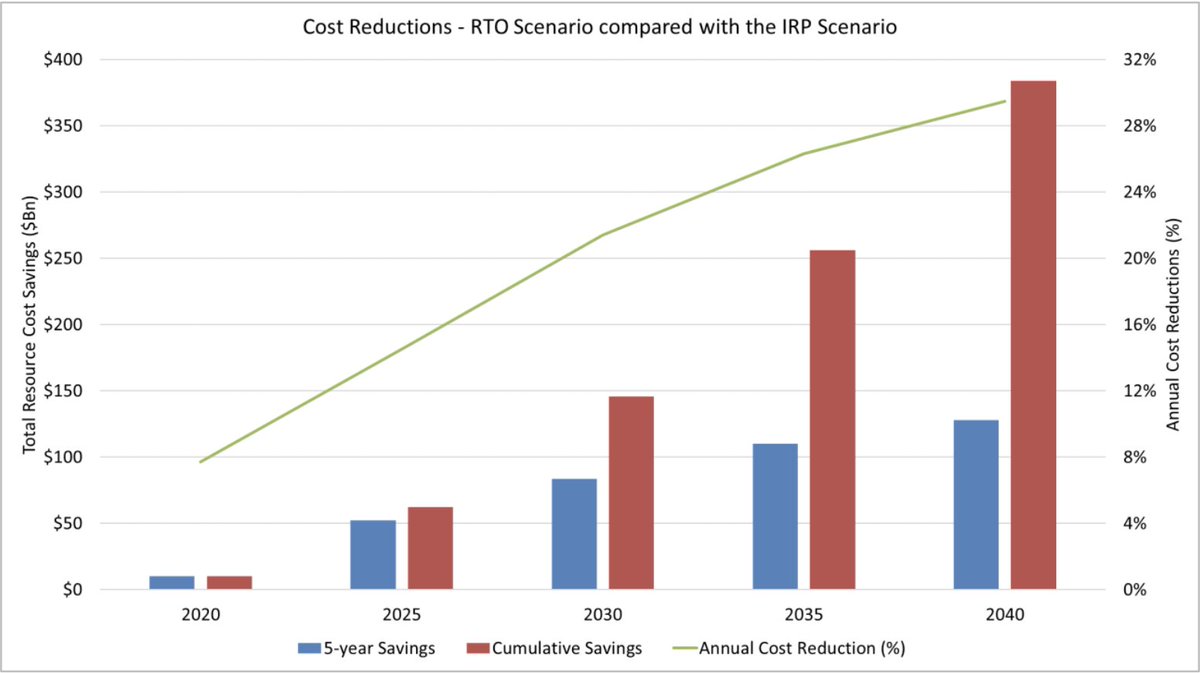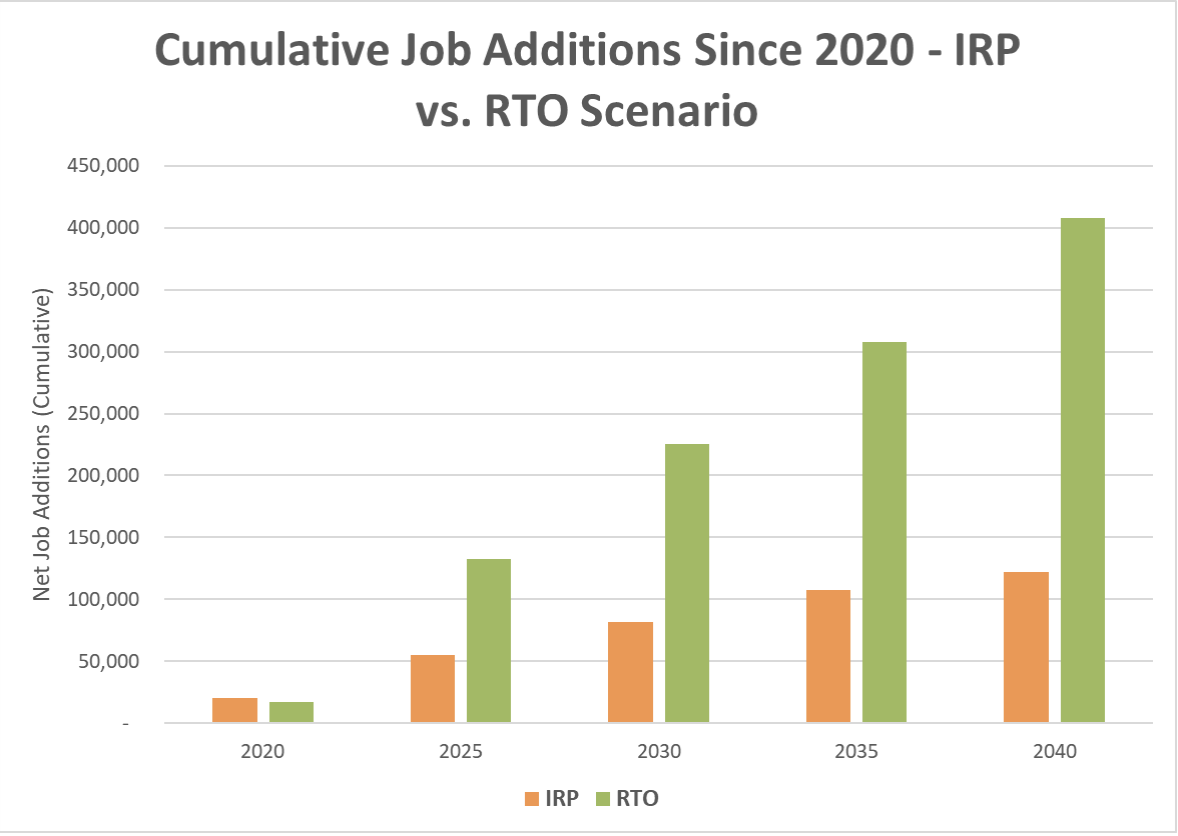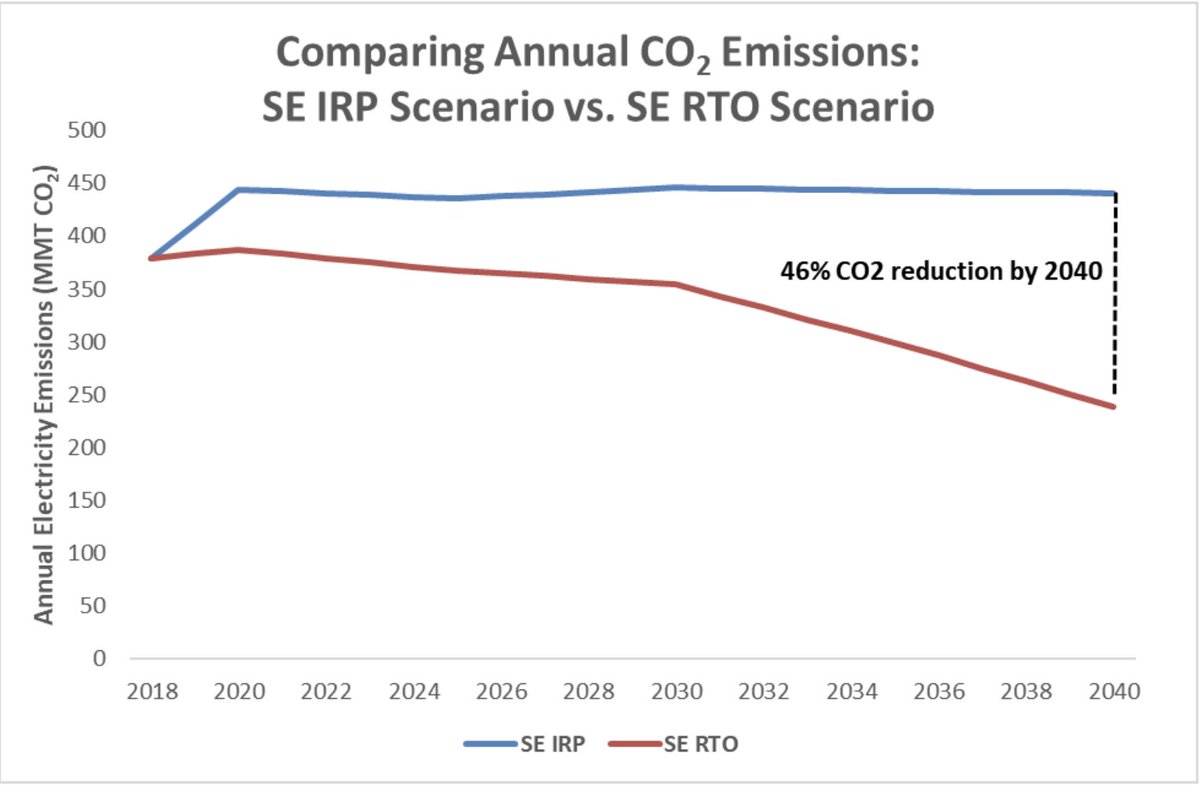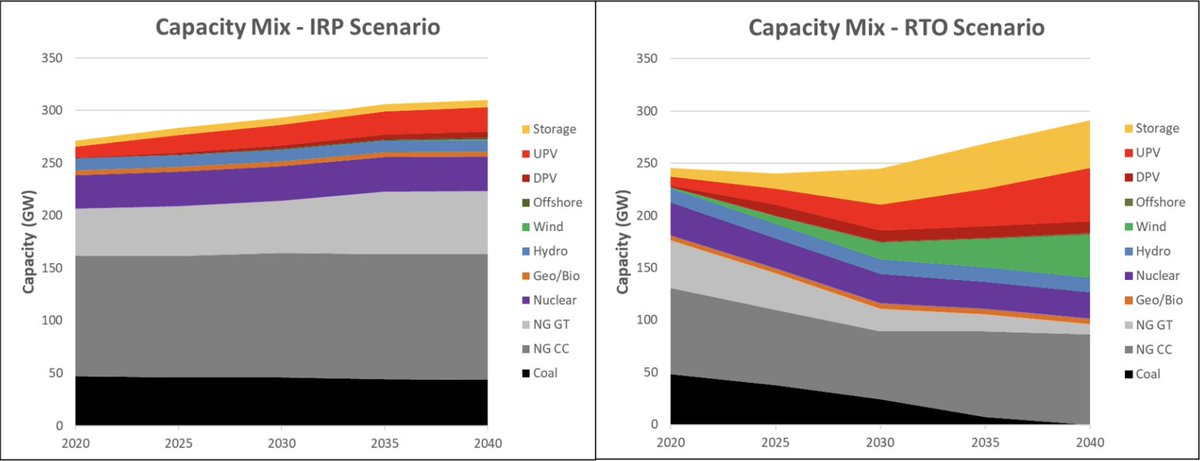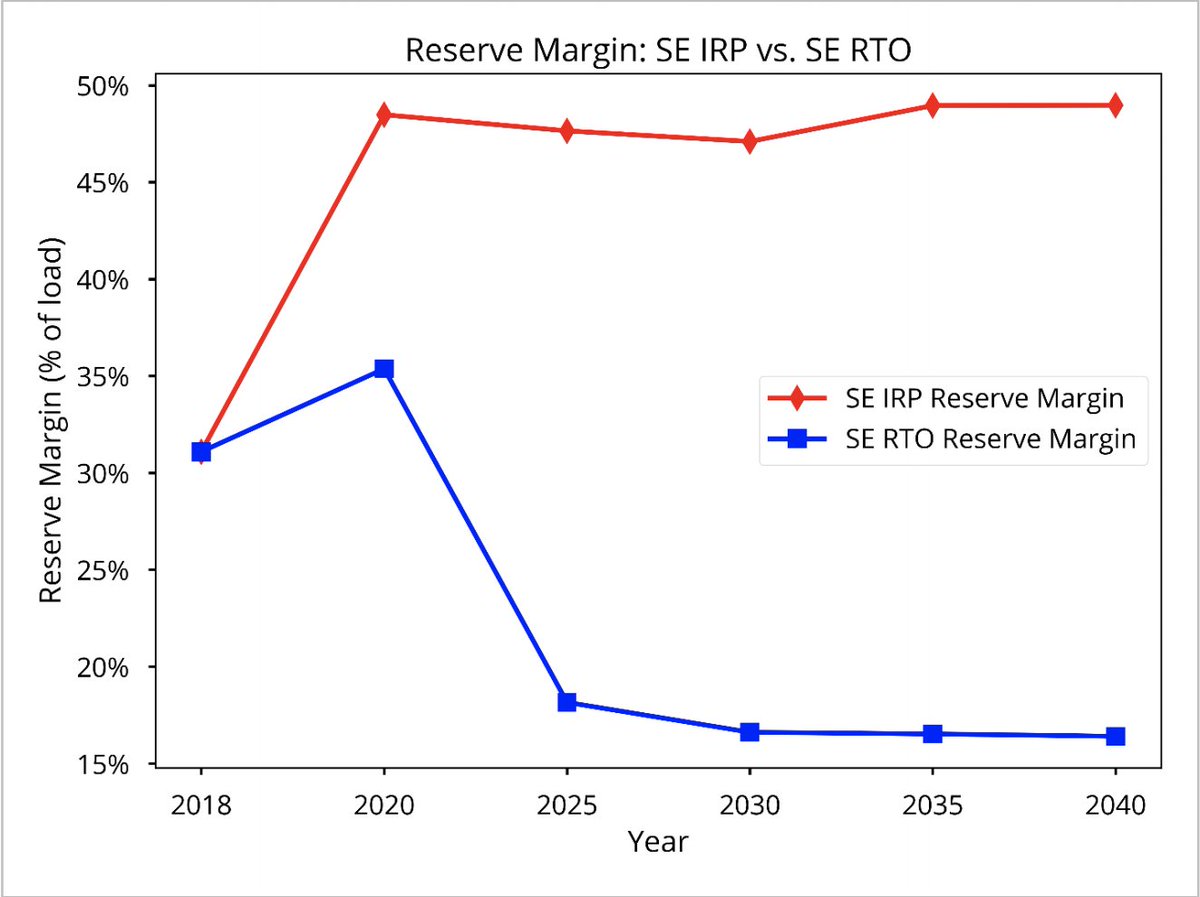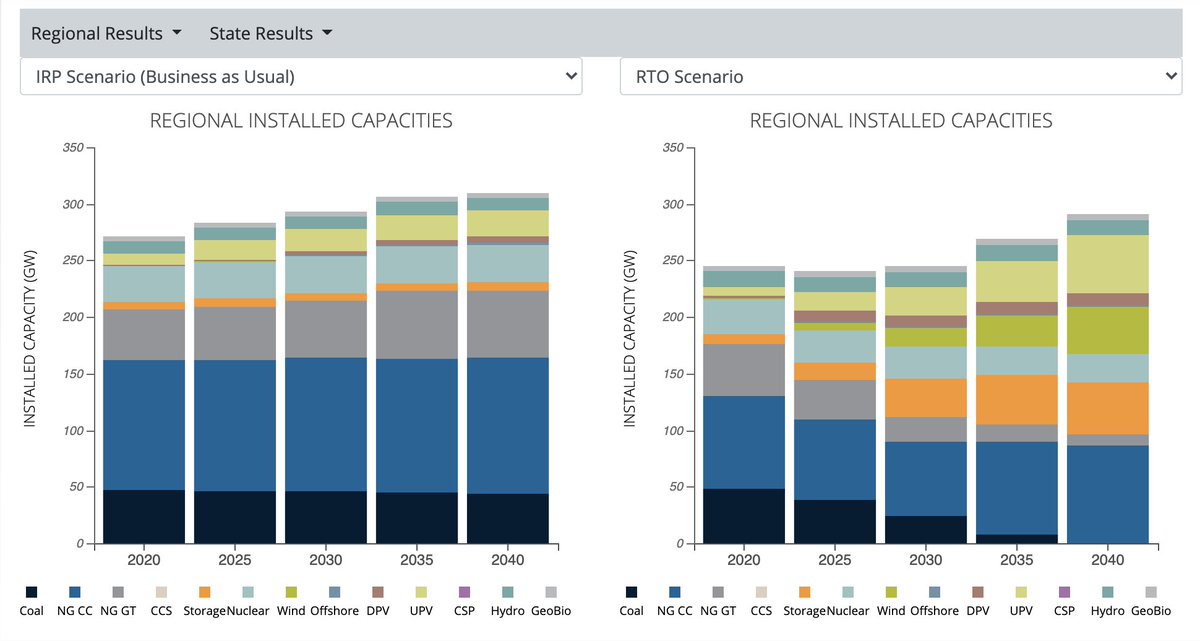The Southeast remains one of the only parts of the nation w/out competitive wholesale electricity markets. A new report from @VibrantCE and @EnergyInnovLLC (& me @GridLabEnergy!) on the benefits of a Southeast RTO: https://energyinnovation.org/publication/economic-and-clean-energy-benefits-of-establishing-a-southeast-u-s-competitive-wholesale-electricity-market/
An">https://energyinnovation.org/publicati... #energytwitter thread on a #SE_RTO 1/
An">https://energyinnovation.org/publicati... #energytwitter thread on a #SE_RTO 1/
Over 70% of electricity consumers are served by an #ISO or #RTO. Not the SE. In the #Southeast, monopoly utilities plan their systems independently, to the near-exclusion of market competition. The region has been slow to retire uneconomic #coal & embrace cheap #renewables. 2/
@VibrantCE models the impacts of a competitive electricity market in #AL, #FL, #GA, #MS, #NC, #SC, and #TN. We compare the utility IRPs to an RTO Scenario, complete with least-cost dispatch, open transmission expansion, and co-optimized transmission/distribution planning. 3/
A #SE_RTO would save consumers $384 billion by 2040 compared to business-as-usual. Expensive coal and gas is replaced with cheap #wind, #solar, and #storage. On average, retail costs are about 23% lower compared to today’s by 2040. 4/
Why? A regional competitive market improves economic dispatch.
It allows resource sharing across 7 states & eliminates excess capacity.
It optimizes transmission to expose expensive load to competitive generation and allows Distributed Energy Resources #DER to provide value. 5/
It allows resource sharing across 7 states & eliminates excess capacity.
It optimizes transmission to expose expensive load to competitive generation and allows Distributed Energy Resources #DER to provide value. 5/
A competitive #SE_RTO retires uneconomic #coal generation and replaces it with the cheapest new form of generating power: wind, solar, and storage. 6/
A competitive #SE_RTO builds a lot of renewables and supports economic recovery. The RTO Scenario supports 285,000 more jobs than BAU. 7/
A competitive market that forces the retirement of uneconomic fossil fuel plants reduces #CO2 emissions and major air pollutants dramatically. Compared to 2018 levels, CO2 emissions are 37% lower in 2040 . 8/
Importantly, many major utilities in the region (like @DukeEnergy and @SouthernCompany) have lofty net-zero goals. Market competition could be a key tool to help achieve these. As @EnergyandPolicy notes, they’re not on track: https://www.energyandpolicy.org/utility-carbon-targets/">https://www.energyandpolicy.org/utility-c... 9/
Our BAU scenario is beholden to the IRPs developed by the utilities. It means we see almost no wind/solar/storage. The RTO Scenario retires coal by 2040 and replaces it with 62 GW #solar, 43 GW #wind, and 46 GW #batterystorage. In 2040, the RTO is 51% clean generation. 10/
A huge factor in the current BAU of resource planning in the SE: the region is overbuilt. Inefficient planning leads to wasted excess capacity leads to wasted consumer $. In 2040, the combined #PRM of the region hits 48%, compared to the reliable 16% PRM in the RTO Scenario. 11/
The results are clear. Greater competition and market coordination will save consumers money, expand employment, reduce emissions, retire polluting fossil fuels, and accelerate #cleanenergy adoption #SE_RTO 12/
There’s a lot in here for #energytwitter! We run two additional scenarios, detailing how some of the benefits (not all) can be achieved incrementally.
We have a data explorer so you can dive into the scenarios: https://energyinnovation.org/southeast-rto-online-data-explorer/">https://energyinnovation.org/southeast... 13/
We have a data explorer so you can dive into the scenarios: https://energyinnovation.org/southeast-rto-online-data-explorer/">https://energyinnovation.org/southeast... 13/
Our policy memo lays out principles to achieve many of these benefits: how to support competitive procurement, what to consider in market design, and how we can manage the transition away from coal: https://energyinnovation.org/wp-content/uploads/2020/08/Policies-To-Support-A-Competitive-Wholesale-Electricity-Market-In-The-Southeast-US.pdf">https://energyinnovation.org/wp-conten... 14/
There’s a technical report that provides the most comprehensive look at one of the nation’s most sophisticated capacity-expansion/production-cost modeling tools: WIS:dom from @VibrantCE: https://vibrantcleanenergy.com/wp-content/uploads/2020/08/SERTO_WISdomP_VCE-EI.pdf">https://vibrantcleanenergy.com/wp-conten... 15/
And yes, we argue that the recently announced Southeast Energy Exchange Market #SEEM is probably a lot less transformational than the utilities claim.
Kudos to @EnergyInnovLLC and @VibrantCE for bringing to light this important work.
16/16
Kudos to @EnergyInnovLLC and @VibrantCE for bringing to light this important work.
16/16

 Read on Twitter
Read on Twitter